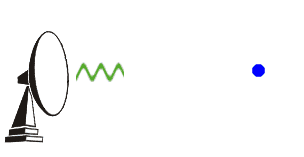|
As the radar antenna turns, it emits extremely short bursts of radio waves, called pulses. Each pulse lasts about 0.00000157 seconds (1.57x10 -6 ), with a 0.00099843-second (998.43x10 -6 ) "listening period" in between. The transmitted radio waves move through the atmosphere at about the speed of light.
By recording the direction in which the antenna was pointed, the direction of the target is known as well. Generally, the better the target is at reflecting radio waves (i.e., more raindrops, larger hailstones, etc.), the stronger the reflected radio waves, or echo, will be.
This information is observed within the approximately 0.001-second listening period with the process repeated up to 1,300 times per second. By keeping track of the time it takes the radio waves to leave the antenna, hit the target, and return to the antenna, the radar can calculate the distance to the target.
The WSR-88D's pulses have an average transmitted power of about 450,000 watts. By comparison, a typical home microwave oven will generate about 1000 watts of energy. However, because of the very short period the radar is actually transmitting, when the time of all pulses each hour are totaled (the time the radar is actually transmitting), the radar is "on" for a little over 7 seconds each hour. The remaining 59 minutes and 53 seconds are spent listening for any returned signals.
|
 |
|
Courtesy of NWS SRH Jetstream
|
|